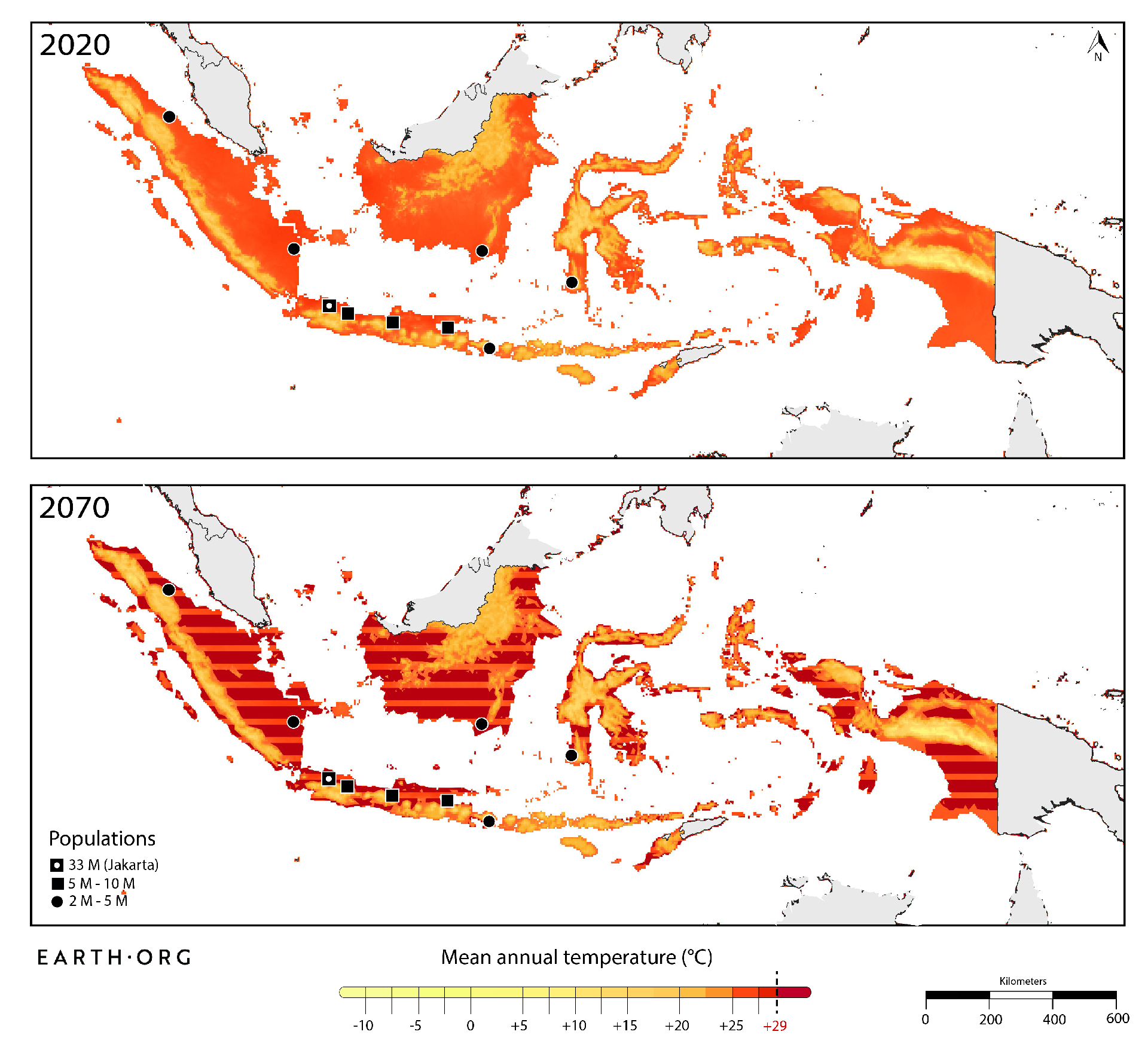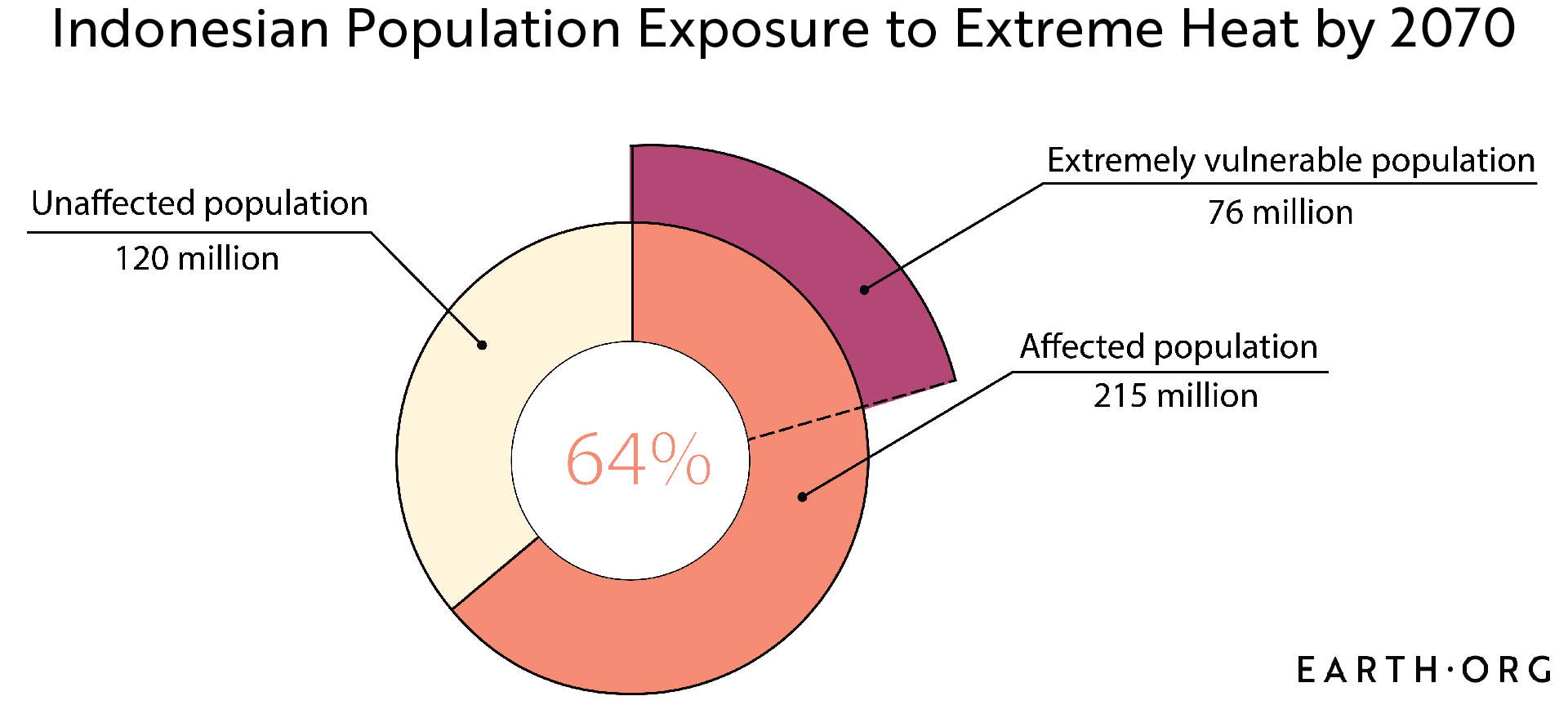Nineteen of the twenty hottest years on record have occurred since 2001, not including 2020 which is on track to top the list. Research has found that mean annual temperatures (MAT) above 29°C, currently found in 0.8% of the world and too hot to live in, could affect up to one third of the world’s population by 2070.
Vast portions of Indonesia could experience such heat, and the consequences would be catastrophic.
—
This case study is based on the paper “Future of the human niche”, published in PNAS by Xu, Chi et al. (2020).
Like many places, Indonesia has recently been experiencing higher-than-average temperatures, hitting the 38.8°C mark in Sulawesi around this time last year. This heat spike was part of a wide-spread wave of high temperatures that spanned the country, and the neighbouring island of Bali, which heavily relies on tourism.
Satellite-based forecasts had announced temperatures exceeding 44°C, which prompted a country-wide buzz on social media. Fakri Radjab, head of the Meteorology, Climatology and Geophysics Agency (BKMG), immediately disputed the news, explaining that the “heatwave phenomenon does not occur in Indonesia”, and high temperatures are a result of the sun being directly over the equator.
A report on the impacts of climate change in Indonesia by the WWF begs to differ, predicting more frequent heatwaves and droughts in the southern parts of the country, but also heavier, more dangerous rainfall elsewhere. Whether Indonesia experiences heat spikes or sustained higher temperatures, the fact is that it’s climate is expected to warm by an average 0.2 to 0.3°C every decade. A study published earlier this year in PNAS (Xu et al. 2020) predicts that many parts of Indonesia will be subjected to mean annual temperatures (MATs) above 29°C, only found in 0.8% of the world today (mainly in the Sahara).

Appearance of mean annual temperatures above 29°C in Indonesia by 2070. Points indicate large agglomerations. Map by Simon Papai.
Based on the mapping above, we have analyzed what percentage of the Indonesian population would be in places where it could become too hot to live. Additionally, based on whether these people live in rural, or undeveloped areas with little possibility for extensive air conditioned networks, we’ve determined the portion of extremely vulnerable inhabitants.

Proportion of the Indian population that will be exposed to temperatures “too hot to live in”. The “extremely vulnerable” are those living in rural areas or slums, with little to no access to heat mitigation. By Simon Papai.
An important factor in determining whether heat is bearable is humidity, which at higher levels can inhibit our ability to cool off via sweat. Northern regions of Indonesia have high relative humidity levels, and large sectors fall under the MAT >29°C predictions. This could create conditions where even a young, fit and healthy person could not go outside without risking overheating and death.
The time lag of climate change has lulled us into a mistaken sense of complacency, when we have actually locked in a certain amount of temperature increase and all its knock on effects. We are heading for a world where an estimated 3 billion people could find themselves in places where it is simply too hot to live, Mars on Earth if you will. Ill-prepared to deal with the massive human displacement this would cause, we must put every pre-emptive effort into avoiding this scenario.
This article was written by Owen Mulhern. Mapping by Simon Papai.
You might also like: Extreme Temperatures in India Will be Too Hot to Live In










![The Statistics of Biodiversity Loss [2020 WWF Report]](https://u4d2z7k9.rocketcdn.me/wp-content/uploads/2020/12/lprwinkyTHB-544x306.jpg)





